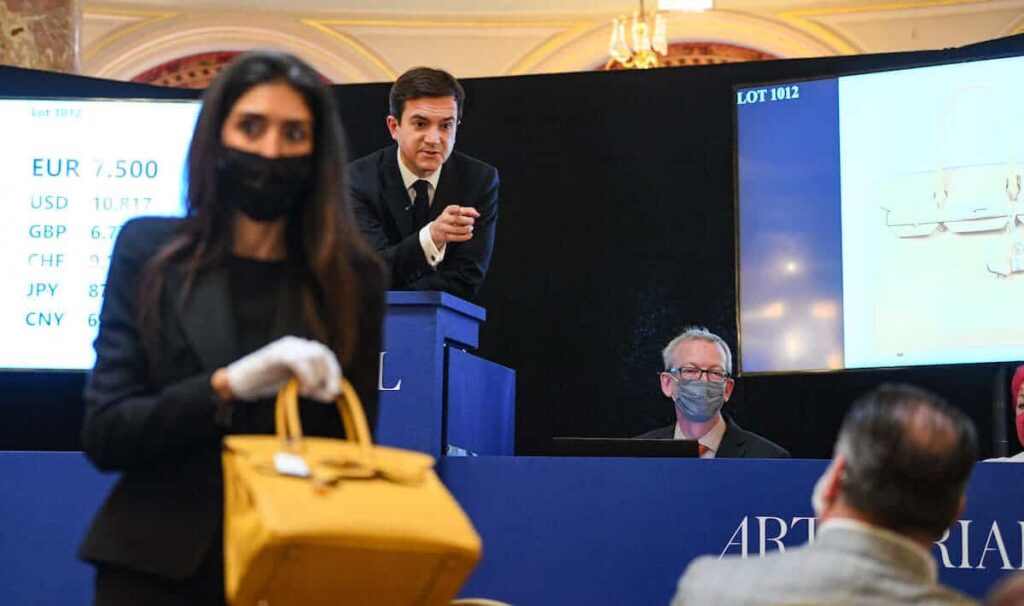Much like their billionaire clients, luxury industries have largely been untouched by coronavirus. In Monaco, superyachts are booming, and the country’s famously sky-high real estate is as stable as ever. However, for Monaco’s auction houses, it’s a slightly more nuanced story.
“We had 57 different nationalities at our July auctions,” tells us Louise Gréther, director of Artcurial Monaco. “Our clients are very international; we have never solely relied on Monaco.” Even before Covid-19, online auctions were an integral part of auction houses, which in Monaco and beyond rely almost entirely on the global market.
However, online auctions have many limits. The first one is that it is difficult to assess items, especially exceptionally expensive items, virtually. Elena Efremova of Hermitage Fine Art, an auction house in Monte-Carlo, has worked her way around the hurdle: “We now do video calls and send additional material, but, of course, it’s always better if our clients can actually see the objects in person.”
Such a statement is particularly true for Artcurial Monaco, which specialises in the sale of luxury bags, jewellery, watches and cars. “We can’t host online auctions for what we are auctioning in Monaco. People have to come to look at the pieces, they have to try them on,” Louise Gréther explains. So far, the French auction house, which in Monaco hosts two annual sales, has made it out unscathed: both the winter and summer sales have been held in-person.
>> READ MORE: Did Monaco’s luxury car market avoid catching Covid?
A spike in interest during summer
Artcurial’s first post-lockdown Monaco auction in July was a resounding success. “We noticed a huge interest in physical auctions. In fact, for the motor car sale, we had to turn people away. It was one of our most successful sales.” The 53 lots of the Artcurial car auction grossed over 7 million euros, including a 1955 Mercedes 300 SL Papillon that went for 1,416,000 million.

Artcurial’s summer success would be in line with a post-lockdown trend that has seen a spike in auction house sales during summer. In Monaco, Elena Efremova says that the effect lasted throughout the autumn. “A lot of people came to our October auction, especially local people, which was unusual.”
Has Covid-19 made people consign more art?
Surprisingly, both auction houses report a rise in consignment requests. Times of crisis and ensuing price drops do not actually make selling valuable art more appealing. Artnet records that in the first six months of 2020, the number of works offered up for sale dropped by one third.

“We’ve definitely noticed an increase in people coming in for valuation requests,” says Louise Gréther. However, she believes that the rise is due to a lockdown-induced spring clean more than anything. “People are rethinking the way they live. Maybe they’ve realised that having a fabulous jewellery collection that’s been in a safe for the last ten years does not make sense anymore.”
>> READ MORE: World’s billionaires saw their wealth rise by 27% during the pandemic
Changing habits
However, not all art is equal in the face of the pandemic. “There is a greater focus on pieces that will hold their value and that have an excellent track record on the secondary market,” explains Louise Gréther. “We’ve seen a renewed interest in Old Masters, as well as in Cartier and Rolex.”
Elena Efremova agrees. “Regardless of what happens with currencies, art has always been an alternative investment. Prices will drop, but exceptional items will always be in demand, which is not the case for more standard pieces.”
As for the future of the industry, Louise Gréther only has one request. “The thrill of the auction room is sacrosanct. I hope we can preserve it.”










